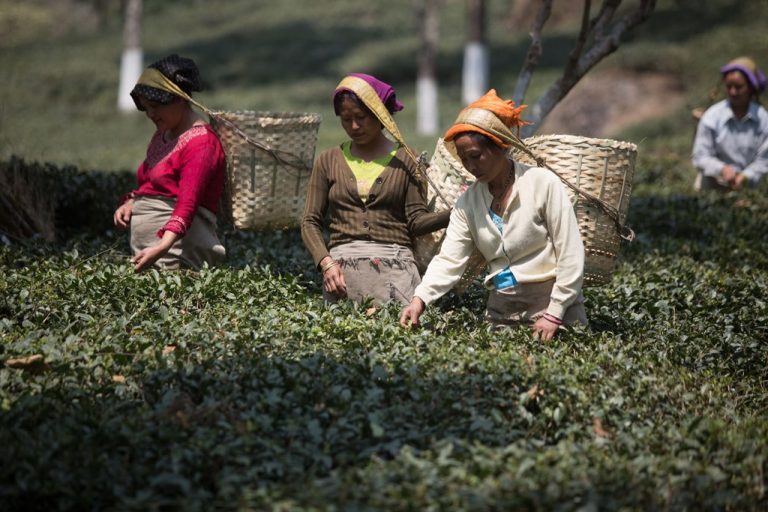How did tea come to India?
It is believed that tea was brought to India by the silk caravans that traveled from China to Europe centuries ago, though the Camellia sinensis is also native to India, and grew in the wild long before its true worth was realized. Native Indians used the leaves as part of their diet sometimes, though mostly it was used for its medicinal properties. Used in cooking, in vegetable dishes or to make soup, it was a long time before it transformed into what’s now famous as chai – a flavourful black tea sweetened with sugar and milk along with spices like cardamom and ginger.
Who discovered tea in India?
An intrinsic part of daily life today, tea was introduced formally to Indians by the British. The origin of tea in India is owed to the British who intended to overthrow China’s monopoly on tea, having found that Indian soil was eminently suitable to cultivate these plants. The evidence of local plants was a great indication that the soil was right for transplanting Chinese seedlings and it was the Assam valley and the looming mountains of Darjeeling that were chosen as early sites for tea planting. After many unsuccessful attempts over 14 long years, tea production in India began to boom, enabling the production of a tea that was equal, if not better, than its Chinese counterpart. Thanks to them, India became, and remains, one of the largest tea producers in the world – second only to China.
The native tea species
Let’s explore the history of tea in India, one of the world’s largest producer of tea. Commercial tea plantations were first established under the British Rule when a native variety of Camellia sinensis plant was discovered by Scotsman Robert Bruce in 1823 in Assam. The story goes that a local merchant, Maniram Dewan, introduced Bruce to the Singpho people who were drinking something very similar to tea. The Singphos plucked the tender leaves of a wild plant and dried them under the sun. These leaves were also exposed to the night dew for three whole days after which they would be placed inside the hollow of a bamboo tube and smoked till flavors developed. Bruce sampled the leaf decoction and found it to be similar to the tea from China.
Bruce collected samples of this plant. But it was only after his demise in 1830 that his brother Charles pursued the interest and sent samples for testing to Calcutta. It was found to be tea but a variety different from the Chinese plant and was named Assamica.
It is significant to note that during the time that these developments took shape, efforts were being made by the East India Company to break the Chinese monopoly over global tea trade due to their rising conflict of interests. One of the initiatives taken by the Company in lieu of this situation was to start producing tea within the British colonies, including India. For this, Chinese tea seeds were reportedly smuggled into the colonies, including India and Sri Lanka, and tested for commercial viability. However, these Chinese plants were unsuitable to Assamese terroir. So the Assamica variant was welcomed. After many trials and extended periods of dedicated efforts, the first British-led commercial tea plantation in India was established in 1837 in Chabua in Upper Assam.

The tea industry in India started to take shape around early 1840. Chinary tea plants, which were first tried out in Assam, were later tested in high-elevation regions of Darjeeling and Kangra, and it was here that they grew far more healthily. Tea planting in Darjeeling officially began in 1841, when the first superintendent of Darjeeling, Archibald Campbell, experimented by planting a few chinary tea seeds near his house. Many others began experimenting with tea in much the same way, and by 1847, an official tea plant nursery was established in Darjeeling. Soon after, the first commercial plantation was established with the setting up of Tukvar Tea Estate in Darjeeling in 1850.
The tea industry in India today
The tea industry did not end when the British left India. In fact, the tea market in India has been growing ever since. Today, there are as many as 43,293 tea gardens across the whole of Assam, 62,213 tea gardens in the Nilgiris and only 85 tea gardens in Darjeeling (source: Tea Board of India). In order to ensure the supply of genuine Darjeeling, Assam, and Nilgiri tea, a compulsory system of certifying the authenticity of these teas was incorporated into the Tea Act of 1953. The words ‘Darjeeling’, ‘Darjeeling logo’, ‘Assam logo’ and ‘Nilgiri logo’ are registered under the Geographical Indications of Goods Act of 1999.
Tea drinking itself has evolved in many ways, with every region of this vast country making their own chai variants. There are humble roadside chaiwallas making hundreds of steaming cups that connect all strata of society, and on the other end of the spectrum are the gourmet stores that sell and serve fine Indian tea.

Comments are closed.